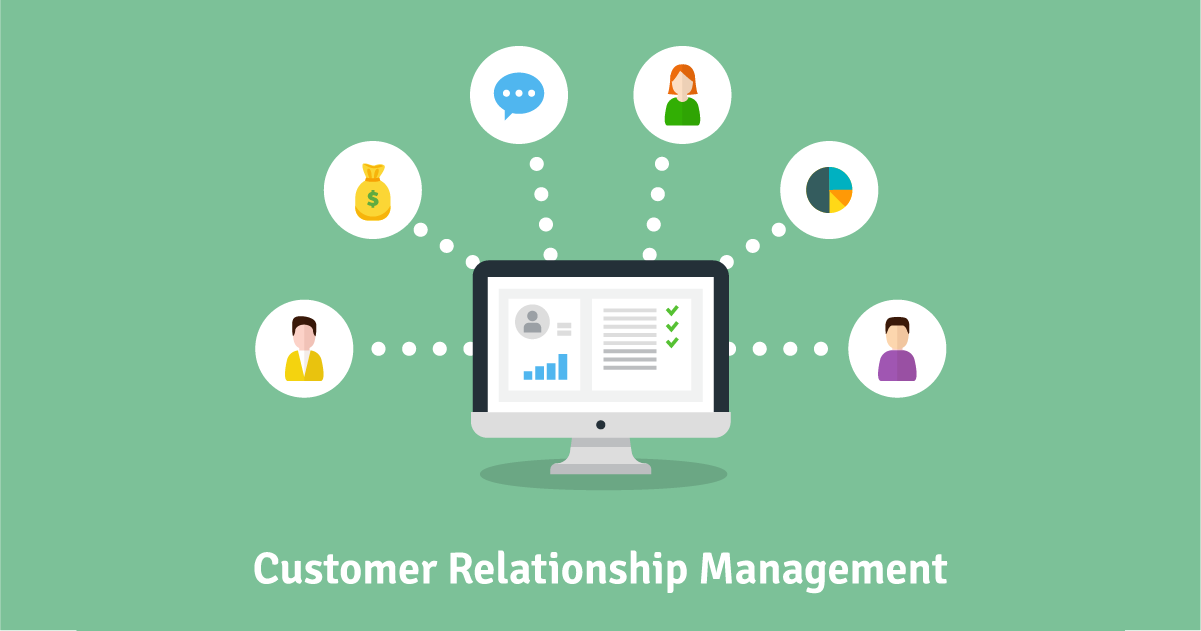Why and How to Regularly Clean Up Your HubSpot CRM Contacts
Written by
 Your customer relationship management (CRM) data make the foundation for your inbound marketing program, your sales team’s actions, and much more. A CRM manager plays a critical role in ensuring that everything you do — from persona development and strategy to marketing emails and website landing pages — is built on accurate information.
Your customer relationship management (CRM) data make the foundation for your inbound marketing program, your sales team’s actions, and much more. A CRM manager plays a critical role in ensuring that everything you do — from persona development and strategy to marketing emails and website landing pages — is built on accurate information.
Your prospects’ experiences are directly impacted by the quality of your data, so it’s important to implement and follow CRM best practices and keep your database clean and efficient. Data field inaccuracies can translate into sloppy segmentation and awkward personalization. Outdated and duplicated data cause even worse problems, hiding relevant contacts, wasting time and resources, and putting your brand image at risk.
Even if prospects are personally responsible for some of the disorder in your CRM data (say, they filled out a contact form using all caps or no caps), the clunkiness reflects negatively on your teams and your brand — and the responsibility for cleanup is yours.
Let’s take a look at how you can ensure orderly data in your HubSpot CRM, and how that clean information can help you create remarkable prospect and customer experiences throughout your inbound marketing, sales, and customer service interactions.
RELATED: How to Use Team-based Partitioning & Roles in HubSpot CRM
Why Your CRM Data Matter, and How the Information Impacts Your Team
Obvious errors in CRM data can spark notable failures: emails delivered to the wrong contacts, mismatched data fields imported into messages, weird capitalization, and maybe worst of all, duplicates.
Messy data can lead to lost opportunities. When segmenting for job titles, industries, regions, or other groups, contacts can be overlooked or missed if data fields are left blank or include nonstandard information. The effort to update these fields, on the other hand, can pay off in as little as a single conversion.
Duplicate information may be the worst offender. It muddles your customer view. It makes your prospect list look bigger than it is and inaccurately portrays your lead generation efforts. That lack of data integrity can create internal trust issues with the teams that have to use the data.
A negative experience can turn a prospect away from your ongoing sales efforts and can even do damage to your email deliverability score and the health of your program. On the inside, team members may dread executing tasks if they’re fearful of problems with your database integrity. Regular maintenance and cleanup keep data searchable, relevant, and useful, building trust both internally and with external target audiences.
Deduplicate, Clean Up, & Build Structure That Supports Data Hygiene
Bad data can be costly, and the rate at which CRM databases grow means cleaning and maintenance absolutely need to be regular and frequent. But ultimately, your effort will pay off when your internal teams are sharper, and prospects and customers feel seen, understood, and valued.
Because it’s a big undertaking, HubSpot recommends a phased approach to CRM cleanup, and if you’ve been avoiding upkeep for a while, this is an effective, systematic way to dive in and get started.
ALSO READ: HubSpot Operations Hub: What Can Its Data Automation Capabilities Do For You?
Worth Repeating: Eliminate Redundant CRM Data
A critical step in CRM maintenance is deduplication.
Why?
First, consider all the potential damage one piece of bad data can do. Now, multiply it. Every duplicate piece of information has the potential to cause trouble, but duplicated inaccuracies can create problems in multiples. Automation tools that integrate with HubSpot, like Insycle can help with this cleanup, saving time and headaches.
Your Regular HubSpot CRM Cleaning and Maintenance Checklist
Your CRM manager should designate who will execute cleanup and organize the tasks into a checklist.
After you’ve addressed duplicate contacts, as described above, it’s time to look at data field standardization, formatting consistency, typos, misspellings, and case issues, including:
- Name capitalization (initial caps — unless you prefer to SHOUT names)
- First and last names in their correct places
- Mailing addresses (check ZIP codes)
- Phone numbers (format for consistency and compatibility with systems that use them)
- Email addresses
Be sure to eliminate extra spaces and the odd characters that sometimes result due to coding issues.
Next up are your CRM job titles and industries. It’s tempting on its face, in the name of accuracy, to allow contacts or team members to manually input titles and industries. But for the sake of segmentation and automation, as well as data integrity, it’s better to develop drop-down or multiple-choice fields for these key data points.
Create job title and industry segment options that make sense within your industry landscape and niche, so that the choice is intuitive for users, and it’s easy for your teams to filter and use the information to qualify leads.
It’s also important to differentiate between marketing contacts and other contacts. Just because someone is in your database doesn’t mean they’re a prospect. Bounces and unsubscribes need to go. Remember, inbound marketing is all about being helpful to the right people at the right time. Partner organizations don’t need your marketing communications or sales attention.
RELATED: 9 Easy Steps to Set Up & Automate Marketing Contacts Management in HubSpot CRM
You can probably think of a few more contacts who should be kept separate from your marketing and sales work. HubSpot’s Marketing Contacts makes it simple to separate without losing track of important non-marketing contacts.
It takes time and knowledge to review the data you have, create relevant title classifications and industry groups, and revise your database content to conform to the new categories. If you think you’re in over your head, don’t wait to call for help. The sooner you begin, the better.
RELATED: 10 Benefits of HubSpot's New Marketing Contacts Feature
Your CRM Database is What You Make of It
Your CRM data can be a source of either friction or force in your B2B inbound marketing flywheel. Clean, sharp data help build trust both internally and with prospects and customers. Solid, up-to-date information makes you look smart in your communications, builds confidence in your teams, and keeps your marketing program fresh, relevant, and accurately targeted.
Ready to learn more about the flywheel approach to inbound marketing and sales? Check out our overview and workbook to learn how you can get marketing, sales, and customer service all working in alignment to power your business growth. Click below to learn more.
Subscribe To Our Blog
Information. Insights. Ideas. Get notified every time a new Weidert Group blog article is published – subscribe now!
You May Also Like...

Artificial Intelligence
Revenue-Driving B2B Content Marketing Strategy with Andy Crestodina

Artificial Intelligence
AI Agents Are Here—How Smart Businesses Are Using Them Now

Inbound Marketing
Podcasting Playbook: What We Learned After 100 Days of Running a B2B Podcast
Accelerate Your Growth with
Weidert Group
If you’re ready to explore a partnership, request a personalized consultation with our team.
